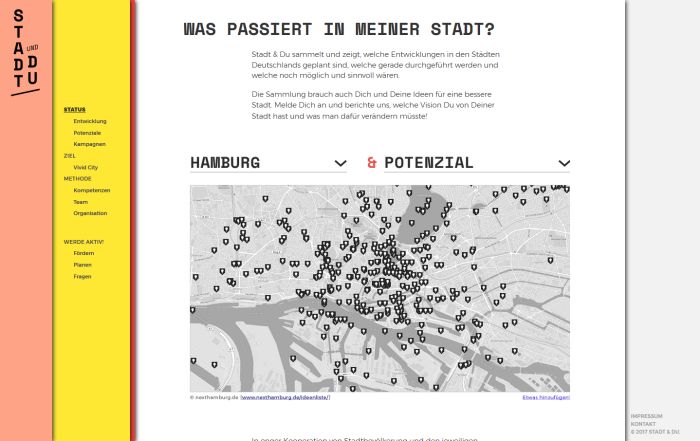The donkey, dog, cat and cockerel featured in the Brothers Grimm's retelling of the traditional folktale Die Bremer Stadtmusikanten never made to it to Bremen, never worked as musicians, and thus never enriched the cultural heritage of the Hansa port.
But would any of the Hochschule für Künste Bremen's 2017 Integrated Design graduates augment the city's long history?
Would any rise to the post of Bremer Stadtkreativen......?
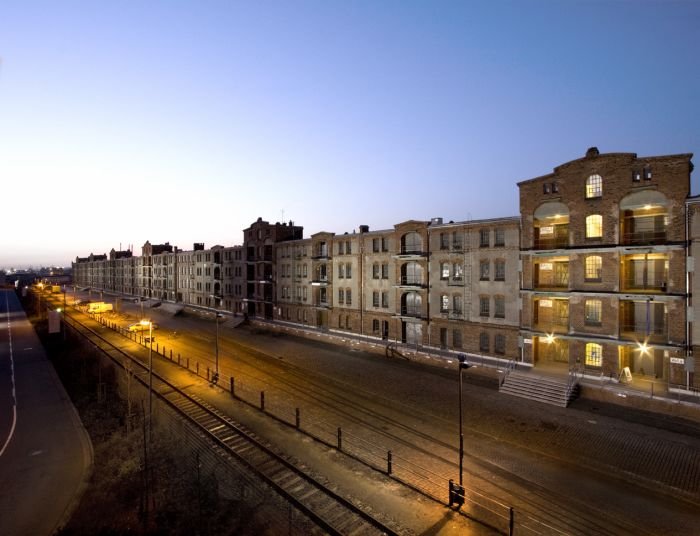
Although formally established in 1979 the history of the Hochschule für Künste, HfK, Bremen begins in the 19th century and involves a slow, almost impermeable, convergence of the city's fine/applied arts college and music conservatory, a convergence whose history remains perceptible: the HfK Bremen being very much half music college and half art/design college. Which is in no way a complaint on our part, far from it, we very much believe that art/ design and music compliment and inform one another far beyond the obviousness of the album sleeve.
Since 2000 the HfK Bremen has offered a Bachelor and Master in Integrated Design, courses of studies specifically established as a response to the evolving nature of the design term and the understanding that designers aren't just those who design physical objects but also those who both design social and cultural systems and also bring form to the intangible aspects of our contemporary world. To this end, while the Integrated Design course begins with courses in the fundamentals of designs and features in later semesters courses in "classic" design subjects such as product design, communications design, interaction design or fashion, it doesn't necessarily distinguish between traditional genres but rather challenges the students to take an inclusive, cross-genre approach.
The 2017 Integrated Design graduate exhibition was staged alongside the Digital Media graduate exhibition under the title 777 - The truth lies within.
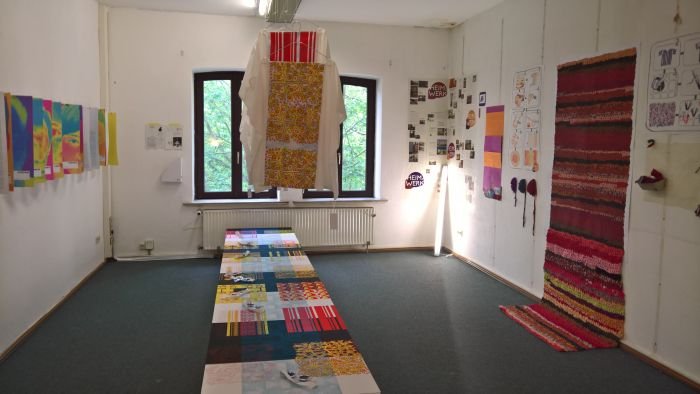
There is the most wonderful dittology in the phrase "The truth lies within", on the one hand the delicious arrogance that the 2017 Integrated Design and Digital Media graduates were/are the keepers of all wisdom, but then the inference that the system is inherently corrupt and our only hope is to disassemble it and configure it anew.
And this necessary process of disassembly and reconfiguration also applies to the effect the exhibition had on us.
Upon entering it we didn't, if were honest, pay very much attention to whether the presented projects were from Integrated Design or Digital Media graduates. And so got really irritated at some projects that clearly weren't design. Until we realised they possibly weren't meant to be. That they came much more from an artistic standpoint.
Which is arguably just what we needed.
In recent months our understanding of the design term has been pushed and pulled in extreme directions, with, we suspect, the result that it has become a little too broad, the elastic at the edges isn't perhaps quite as taught as it could be. And thus a disorientating moment where an inescapable confusion and irritation forced us to focus hard on the essentials, to break down and reform our understanding of design, and thereby find a way through without being distracted by the peripheries, or being sick, probably did us the world of good. Brought everything nicely back into focus.
Whereby we'd still argue that not all the Integrated Design projects were design. Or at least not in context of our newly firmed up understanding of the term.
There were however also a few moments of clarity amongst the disorientation and questioning, moments of clarity in both the Integrated Design and Digital Media presentations......
While arguably the fact that our considerations on the exhibition Breathing Colour by Hella Jongerius at the Design Museum London were still fresh in our minds may have caused Licht & Farbe - Light & Colour - by Gerda Marie Notholt to, well, shine a little brighter than it may otherwise have. We still like to think it would have appealed to us without the Jongerius preliminaries.
Exploring aspects of our perception and understanding of colour Licht & Farbe is/was in many respects the substantive pendant to the much more conceptual Breathing Colours, and an investigation which saw Gerda Marie ask four questions: what is the relationship between colour and surface, what are colours and how do they behave, in how far does coloured light affect our perception of objects' colours, and why is yellow light not always the same yellow light?
Exploring the four questions in neatly self-contained experiments Licht & Farbe was as much about making the answers tangible as the science behind them. And something in did in a most engaging, playful and accessible fashion, one particularly nice example explaining the difference between colour caused by pigmentation and colour caused by the structural properties of a material's surface: flamingos feathers are pink because of the pigment carotenoid, the blue of the morpho butterfly a result of the surface structure. A difference explained, as with all the explanations, via very simple analogue media, simple analogue media, which for us makes Licht & Farbe a project perfectly suitable for developing into a teaching aid.
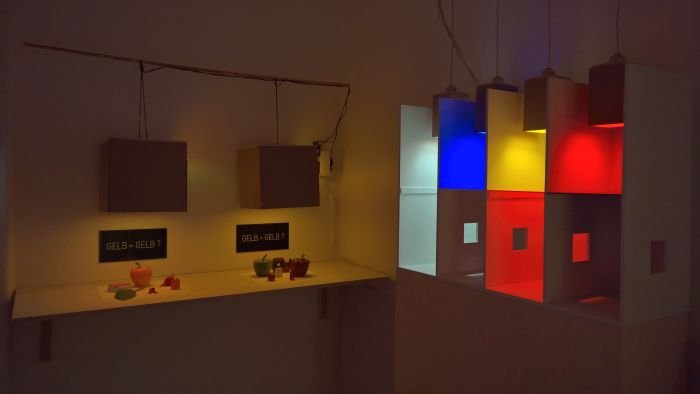
The one aspect of the whole discussion around "fake news" which we really, really don't get, is the number of individuals out there who simply believe everything that is on the internet.
Why would you do that?
Admittedly we're so cynical we even question the authenticity of our cynicism, and certainly we would never believe a word we write without independently verifying it; but are we not all perfectly clear that the internet just reproduces what is put on it, that algorithms just push that which is conceived as being the most popular, and that there are a lot of people out there trying to (mis)use the internet for financial, political, personal or criminal gain. And therefore one should always approach anything, but anything, online with a little caution....
Particularly that which exists on social media.... not least the domain of the so-called social media influencers.
Why do people get excited just because someone posts a picture on Instagram?
No. Why?
With the project Infinite Identities Digital Media graduate Mathias Lam neatly highlighted the ease with which the nefarious can influence online opinions. In one experiment he created numerous clones of his twitter account, via which anyone can communicate in his name. With the obvious questions about digital identities that poses, while in the second, and for us more interesting, experiment he created a form of Instagram factory in which neatly compact robotic machines create posts and interacted with other users.
Now such happens, globally, everyday, the project is very much an example of art imitating life; however, most of us never see the manipulation, don't understand how simple it is, don't understand that machines smaller than your coffee maker can, potentially, influence online opinions and discourses.
Of course they can only do that when we let them, by not questioning what we're viewing.
Thus in many respects Infinite Identities could be considered an alarm clock as much as an art project.
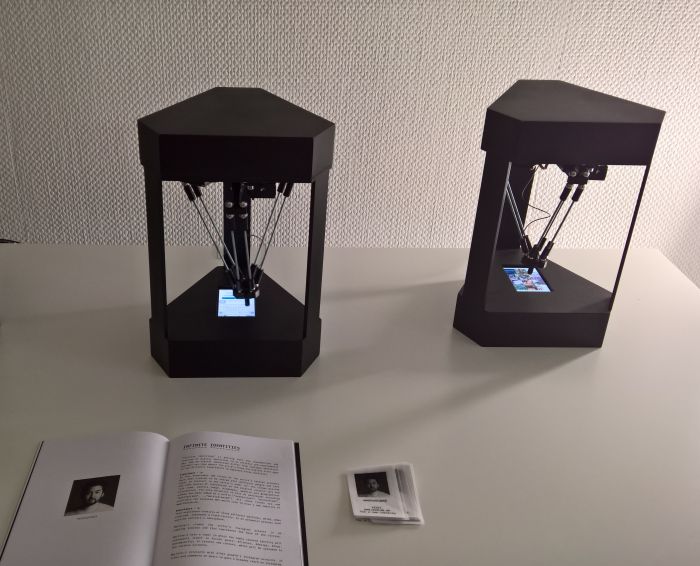
We happily admit the fact that Ben introduced his project with the words, "Why do we have personalised muesli and smart Tracking-Apps..." greatly attracted us to the project. Quite frankly, it could have involved drowning kittens, we'd still have stopped to consider it's merits.
As it turned out Stadt & Du - The City & You - wasn't/isn't about anything so distasteful, but rather is a platform conceived with the intention of promoting public participation in discourses on urban development.
While on the one hand an eminently sensible concept, for our part we are moving ever further away from a position that promotes unlimited, universal, participation is such matters.
Although we strongly believe that everybody should, indeed must, concern themselves with such questions, we don’t believe that everyone has an equal claim to active participation: too many of us either have a biased position from which, for various reasons we can’t or won’t move, while a great many us simply aren’t in a position to form considered, objective opinions on specific matters. Which isn’t to say we are thick, is however to say we often lack the specialist knowledge: some things are complicated and require experts. That’s a fact. If one which in our modern world where everyone can comment on everything all the time and therefore assumes they are a universal specialist, is all too often forgotten.
Informing yourself about what is happening, understanding what is planned, what the long term consequences could be and what the alternatives are, is however important, as are platforms where input can be collected – albeit with the understanding it may be rejected if it is obviously biased or ill-informed. But accepted and used where it is meaningful and good.
Or put another way, platforms which don't exst to push a particular standpoint or agenda, but rather allow for a transparent, open and fair presentation of facts.
Proposing as it does a platform which presents those projects which are in progress, planned and potentially could be realised in a community, Stadt & Du aims to generate a wider dialogue abut urban development, and for all a more joined up dialogue, than is currently to be had. And we would hope a dialogue that avoids focussing on the specifics of individual projects, and rather the wider perspective and thus encourages an urban planning process that takes a more holistic, transparent and long term view than is perhaps currently the case. And one in which experts have the final say. As in real experts. Not twitter experts.
Full details on the Hochschule für Künste Bremen can be found at www.hfk-bremen.de
